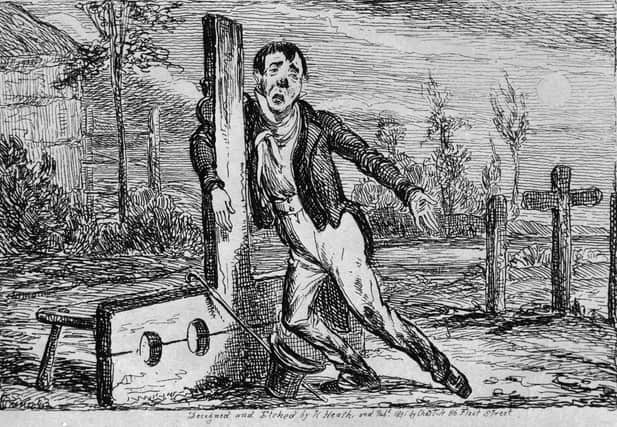Scotland's old laws, like hamesucken, stouthrief and plagium, reveal how lawless and violent society once was – Tom Wood


Defined as the invasion of a person’s dwelling house in order to assault them, it is a throwback to the old common law of Scotland, now seldom used.
Like stouthrief – use or threats of violence against a householder who defends themselves during a housebreaking – and plagium – the theft of a child below the age of puberty – these ancient crimes remind us just how bad the good old days really were. No political virtue-signalling here.
Advertisement
Hide AdAdvertisement
Hide AdThese and the other common law crimes were codified because they were needed.
Nowadays most housebreakings take place when the house is unoccupied or at least when the residents are asleep. Not so in the 18th century. And yes, children were stolen.
Before the Victorian vision of protected childhood, many children were simply seen as small economic units – workers, pieces of property worth stealing.
Much of the common law has now been superseded by statute but even these early Acts offer a fascinating lens through which to view the society of the day. The Licensing (Scotland) Act of 1903 is a fine example.
It was a piece of legislation enacted to deal with a serious problem. In the mid-19th century the abuse of alcohol in Scotland reached its peak, taking a terrible toll of our society. The licensing acts reflected the struggle to bring the situation under control.
The regulation of hotels, pubs and off-sales was strict. Offences included being drunk in charge of a carriage, horse, cattle or when in possession of a loaded firearm.
Being drunk and disorderly was a common offence as was being drunk in charge of a child apparently under seven years of age. It paints a picture of Edwardian Scotland that is a long way from Downton Abbey.
But the most common offence was being drunk and incapable – being found in a state of intoxication and incapable of taking care of oneself. Well into the 1970s, arrests for drunk and incapable – known as D&I – were still common, although mainly for the protection of the accused rather than punishment. Alcohol continues to do us great harm, but thankfully drinking patterns have changed.
Advertisement
Hide AdAdvertisement
Hide AdMost of these old crimes and offences are now consigned to history but, like the recent case of hamesucken, they sometimes bubble up.
Recently I took an American friend to catch a flight at my local airport. After driving to the nearby park-and-ride, we boarded a tram to take us the few hundred yards to the terminal. We were astonished to learn that the one-way fare for the shortest of journeys was over £6.
The cheerful tram conductor told us that the extortionate fare was an informal airport tax.
So it seems that the ancient crime of highway robbery is still alive and well. The only thing missing was the order to “Stand and Deliver”.
Tom Wood is a writer and former Deputy Chief Constable
